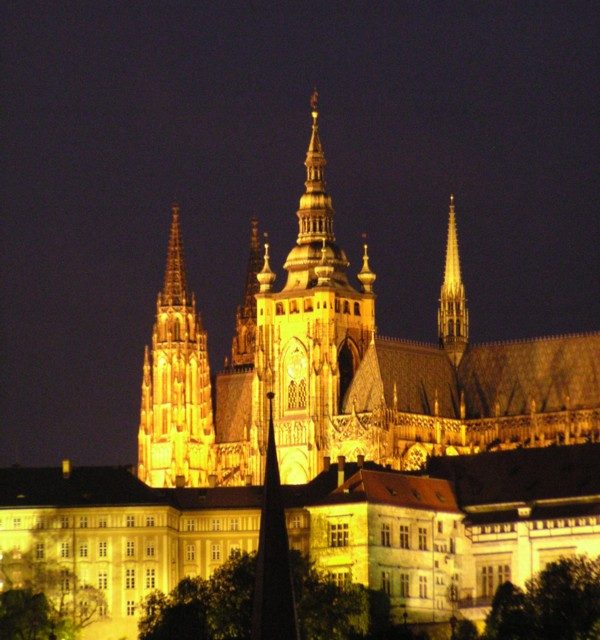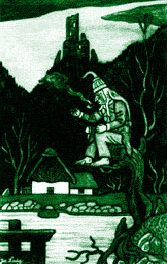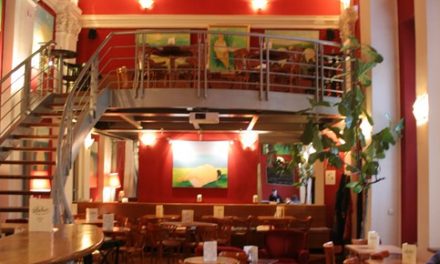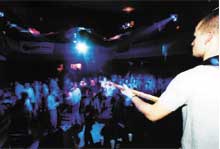And Prague? A.M. Ripelini calls Prague magical but Ernest Denis says she is a city of tragedies. The magic and tragedy are encoded in the labyrinth of twisting streets in Prague’s Old Town. Every stone here speaks. Upheavals and revolutions were more frequent, passions more intense, battles more furious and fierce than anywhere else, because nowhere else was victory so tied to survival.
The idea of "Genius Loci," the spirit which inspires a given place, forms its personality, and unifies its parts and fragments into a whole, seems to have been forgotten in modern times. Yet the past, the deeds of those long dead, have a magical influence on those born in the same place centuries later. Genius Loci is the interaction of those who are related by physical contact, by local tradition, and by their history, as the same problems, formulated by the facts of geography, are posed to successive generations.
Physically, Prague sits astride its silver-hued river, crossed by two parallel ridges. The river, known abroad by its German name, the Moldau, is called the Vltava, its older Celtic name, by residents. Flowing from South to North, the Vltava makes a detour around the quarter of Holesovice, forming the letter P. The heart of Prague lies at the junction point of this P. Here the 14th century Charles Bridge connects the Old Town to the Lesser Quarter or Mala Strana. The nobility built their palaces along the river here and on the steep slopes leading up to the Castle, which dominates the skyline.
Some million years ago, a cosmic body approached this place from the East. Just before impact, it split into two halveswhich carved the two parallel ridges. The whole city lies in a shallow crater formed by this cosmic collision.
Astride the Fault
Some of the great ideas of European civilization were born in Prague. Here the monolith of the medieval church started to crack and splinter. Ideas of religious plurality were followed by concepts of religious tolerance, and of a secular peacekeeping alliance, the League of Nations, predecessor to the United Nations. How did it happen that these ideas were born in this place?
Prague sits atop a cultural fault line which separates Eastern and Western Europe. On the surface, the line seems to separate the Germanic population to its west from the mostly Slavic population on its east. However, the division is more ancient and much deeper.
Bohemia, the province surrounding Prague, was the farthest northeast reach of the Roman Empire in its heyday. Later the Roman Empire split into Byzantium and the Holy Roman Empire along this line. The fracture runs from Danzig across Poland, south through Prague to Austria, and ends in Bosnia. In Sarajevo this north-south fault meets another dividing line, separating the Muslim population to the south from the Christian north. The two lines form an inverted T carved across the face of Europe. Like earthquakes erupting along geological faults, many European wars started along the arms of this T.
Prague has been pounded by alternating waves, from the west and from the east. In 863 AD two monks, Cyril and Methodius, were invited from Constantinopole to Prague to convert the Slavs to Christianity. They created a variant of the Greek alphabet called Cyrillic, used wherever the Eastern Orthodox church became dominant. This cultural and linguisticdivide is visible today in the Serbian and Croatian languages. They are the same Slavic language with same dictionary, one written in the Roman alphabet and the other in Cyrillic.
Cyrillic and Eastern Orthodoxy were not to become dominant for the Czechs, however. They were pulled West with the formation of the Holy Roman Empire. During the golden period of Emperor Charles IV’s rule, Prague was the capital and center of that empire, flourishing culturally, intellectually, and economically. Prague’s Gothic architecture, its Charles Bridge and hundreds of medieval spires, are the signature of this era.
Some of the great upheavals of later European history started in Prague itself, as the pendulum of power continued to swing first one way, then the other.
Three "defenestrations" set these changes in motion.




